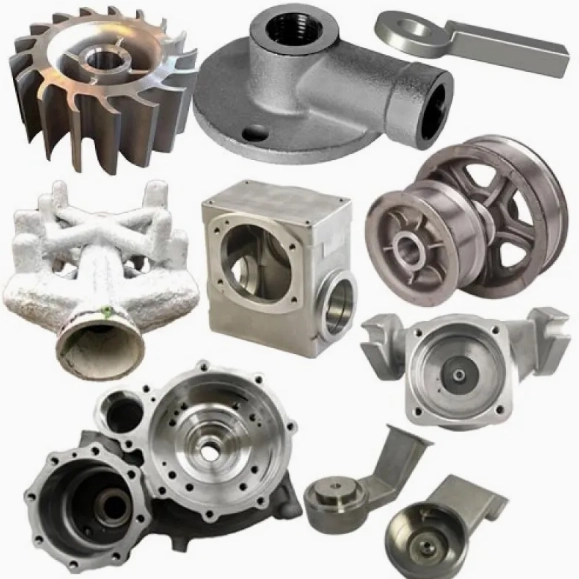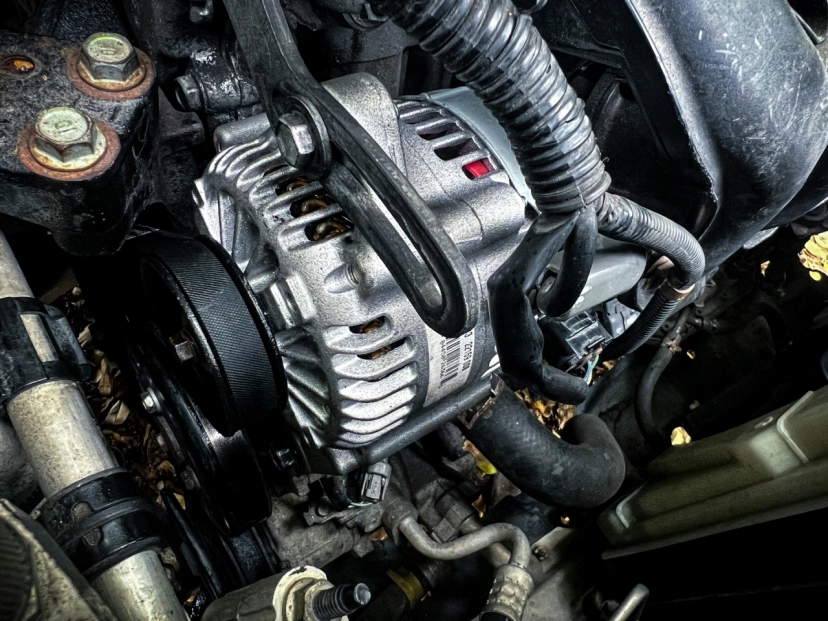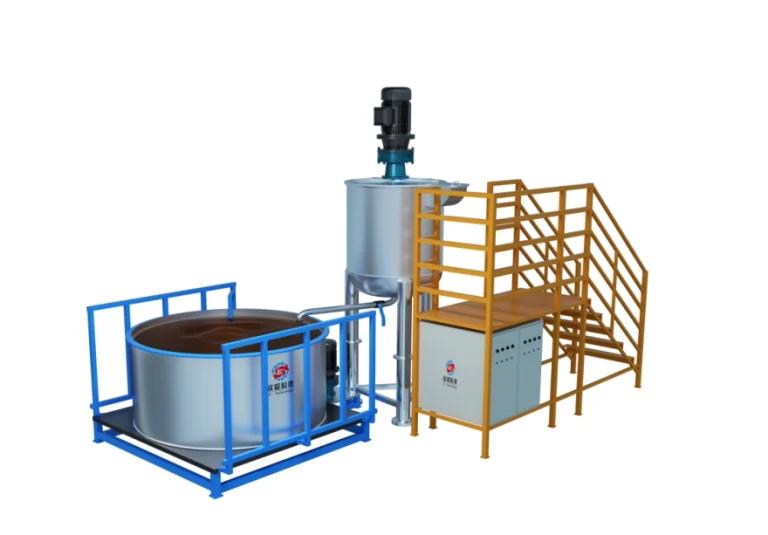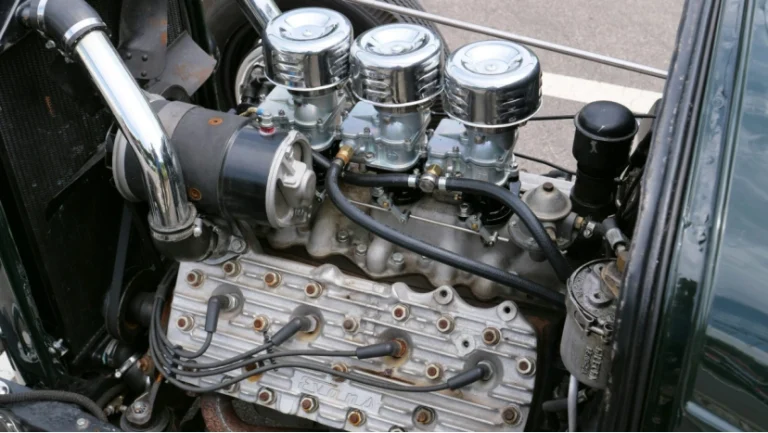Introduction to Lost Foam Casting
Lost foam casting is a new way to make exact metal pieces. It begins with a foam model. This model is covered with a special layer, placed in sand, and then swapped with hot metal. This way is liked because it forms tricky shapes with high correctness and low prices. Unlike old casting, it needs less smoothing and makes even surfaces. Lost foam casting products are used in many fields, from vehicles to big machines. This blog looks at the uses and good points of lost foam casting parts. It shows why they are a great pick for makers.

What Are Lost Foam Casting Products?
Lost foam casting products are metal pieces made using the lost foam casting process. These pieces are key in fields like car-making, machine-building, and building tools. For instance, gearbox covers and transmission covers are usual lost foam casting parts. They can be made from stuff like grey iron, cast iron, or steel, based on what’s needed. The process lets makers create detailed designs that are tough to do with other ways. Hangzhou Ouchen Technology Co., LTD gives modern tools to help lost foam casting foundries make top-quality pieces. This flexibility makes lost foam casting products a top choice for many makers.
Key Characteristics of Lost Foam Casting Parts
Lost foam casting parts are special for their unique traits. They have awesome size correctness, so they match the plan very well. Their even surface finish means less need for extra shining. These parts also need less cutting, which saves time and cash. For makers, this means quicker work and lower prices. For users, lost foam casting parts are trusty and fit just right in machines like gearboxes or transmissions. These traits make lost foam casting applications well-liked in many fields.
Materials Used in Lost Foam Casting Products
The stuff used in lost foam casting products changes how they work. Grey iron is often used for parts like gearbox covers because it’s tough and cheap. Cast iron is picked for pieces like transmission covers, giving strength. Steel is used for strong lost foam casting parts, like those in big machines, because it’s very sturdy. Each material has pros and cons. For example, steel is heavier but tougher, while grey iron is lighter but less strong. Picking the right material makes sure lost foam casting applications meet certain needs, balancing price, weight, and toughness.
Common Lost Foam Casting Applications
Lost foam casting products are used in many fields because they can manage hard designs. In car-making, they create pieces like gearbox housings and transmission covers. In farming, they make parts for tractors and crop machines. Big machines also depend on lost foam casting parts for special setups. The process is perfect for these lost foam casting applications because it makes exact, sturdy parts with little waste. This ease makes it a top pick in lost foam casting foundries around the world.

Automotive Industry: Gearbox and Transmission Components
The car field uses lost foam casting parts a lot. Gearbox covers, cast iron gearbox housings, and cast iron transmission covers are main examples. These pieces need high exactness to work in engines and transmissions. Lost foam casting foundries use the process to make parts that fit perfectly and handle pressure. The even finish and correctness of lost foam casting products reduce damage, making cars more dependable. This dependability is why car makers trust lost foam casting for important pieces.
Industrial Machinery: Custom Lost Foam Casting
Big machines often need custom lost foam casting parts. For example, steel casting parts are used in heavy tools like cranes or presses. The lost foam casting process lets makers create special shapes that meet exact building needs. This custom work is great for tricky setups that normal casting can’t do. Lost foam casting foundries use modern tools to make these unique parts, ensuring they are tough and exact. This ease makes lost foam casting applications key for special machines.
Other Applications: Beyond Automotive and Machinery

Lost foam casting products go past cars and machines. In farming, they make pieces for tools like plows and water systems. Pumps and valves in the energy field also use lost foam castings for their detailed designs. These pieces gain from the process’s ability to create light, strong parts. For example, a pump housing made with lost foam casting is both sturdy and works well. These varied lost foam casting applications show how the process meets different field needs.
Role of Equipment in Lost Foam Casting Foundries
Top-quality lost foam casting products rely on modern equipment. Công ty TNHH Công nghệ Hàng Châu Ouchen offers machines that help every step of the process. Their foam shaping machines, like horizontal and vertical PLC hydraulic types, make exact foam models. Air dryers, including top-placed and indoor types, make sure drying is done right. Central vacuum systems and lift-type paint mixers help with shaping and coating. Storage silos and foam sheet machines add steadiness to the process. These tools make lost foam casting foundries quick and able to create awesome lost foam casting parts.

Máy tạo tiền trước Và Maturation Silo in Lost Foam Casting
The pre-foaming systems employ multi-stage steam injection to precisely regulate bead expansion, ensuring uniform particle size distribution critical for structural integrity. Ouchen’s equipment integrates vacuum-assisted cooling during the molding process, enabling rapid solidification of foam clusters through controlled vacuum pressure, which minimizes thermal deformation and enhances surface finish .
In lost foam casting, the maturation silo plays a crucial role in stabilizing newly foamed beads. These beads, under initial negative pressure, must undergo a maturation period of 8–12 hours to allow air to penetrate their structure, balancing internal and external pressure. This ensures sufficient expansion during molding. Advanced systems use stainless steel pipes and anti-static technology for bead transport, minimizing fire risks. The silo features sensors and precise control of parameters like maturation time and bead density, ensuring consistent quality and safe, efficient operations.
Foam Molding Machine and Vacuum Systems for Foam Stabilization
Hangzhou Ouchen Technology specializes in horizontal and vertical PLC hydraulic foam molding machines designed for high-precision lost foam casting. These machines utilize automated temperature and pressure controls to shape foam beads into intricate models with minimal dimensional deviation.
Ouchen’s vacuum systems are tailored for white-zone operations, working in tandem with foam molding machines to stabilize foam clusters during cooling. These systems employ spray-vacuum cooling technology, where controlled vacuum pressure extracts residual gases from foam beads while atomized water droplets accelerate heat dissipation. This dual-action process ensures uniform foam density and eliminates internal voids. The vacuum units are equipped with automatic pressure regulation and moisture-resistant seals to maintain stable operating conditions, critical for producing defect-free cores for components like gearbox covers .
Air Drying
In lost foam casting, an air dryer plays a crucial role in the drying stages of both white molds and coatings. After foam raw materials are expanded and matured, they are molded into white patterns using forming machines. During this process, a central vacuum system removes moisture and heat via negative pressure. The formed white molds then enter a drying chamber, where our top-mounted or rear-mounted air dryers utilize heat pump air energy technology to deliver high-temperature, dehumidified air. This ensures thorough drying with energy efficiency, zero emissions, and improved product quality—optimizing each stage of the lost foam casting workflow.
Hệ thống lớp phủ
For coating applications, Ouchen’s anti-settling dip tanks are paired with high-shear mixers to maintain consistent viscosity and uniform application of refractory coatings. These coatings—formulated with alumina-silicate binders and ceramic microspheres—enhance thermal insulation and gas permeability, reducing defects like penetration and carbon trapping. Advanced UV-assisted curing technology accelerates solidification, improving production efficiency .
Benefits of Choosing Lost Foam Casting for Components
Lost foam casting has many good points over other ways. It saves cash by cutting down on cutting and material waste. It can make tricky shapes, like gearbox housings and transmission covers, that other ways find hard. It also makes less waste for the environment, making it green. Compared to sand casting, lost foam casting parts have smoother surfaces and better exactness. These good points make lost foam casting products a wise pick for makers.
Cost and Efficiency Advantages
Lost foam casting is money-saving. It cuts down on cutting needs for parts like grey iron gearbox covers and cast iron transmission covers. This saves time and cash. The process uses less material, which lowers prices more. For makers, this means faster work and more money. Lost foam casting foundries can share these savings with buyers, making lost foam casting parts a cheap choice.
Environmental and Sustainability Benefits
Lost foam casting is kind to the earth. It makes less waste than old casting because foam models can be reused. The process also uses less power, cutting down its effect on the environment. For companies caring about being green, lost foam casting applications are a super choice. Pieces like gearbox housings made this way are both top-quality and earth-friendly.
FAQs About Lost Foam Casting Products
What are the main advantages of lost foam casting products?
Lost foam casting products are exact, save money, and have even surfaces. They cut down on cutting needs and can make tricky shapes.
Which industries use lost foam casting parts most frequently?
Car-making, machine-building, farming, and energy fields often use lost foam casting parts for pieces like gearbox covers and valves.
How do lost foam casting foundries ensure component quality?
Lost foam casting foundries use modern tools, like foam shaping machines and air dryers, to make correct, strong parts.
What materials are best for lost foam casting applications?
Grey iron, cast iron, and steel are common. They are picked based on toughness, weight, and price needs for certain lost foam casting applications.
How does Hangzhou Ouchen Technology Co., LTD support lost foam casting production?
They give machines like foam shaping systems and air dryers to help lost foam casting foundries make top-quality parts.
Conclusion: Exploring Lost Foam Casting Opportunities
Lost foam casting products give exactness, flexibility, and money savings. From gearbox covers to custom steel pieces, they help fields like car-making, machine-building, and farming. With modern tools from Hangzhou Ouchen Technology Co., LTD, lost foam casting foundries make trusty pieces. To learn more about their lost foam casting tools, call them at +86 15988479417, email zyh@oc-epc.com, or visit https://www.oc-epc.com/. Check out how lost foam casting can meet your making needs today.





